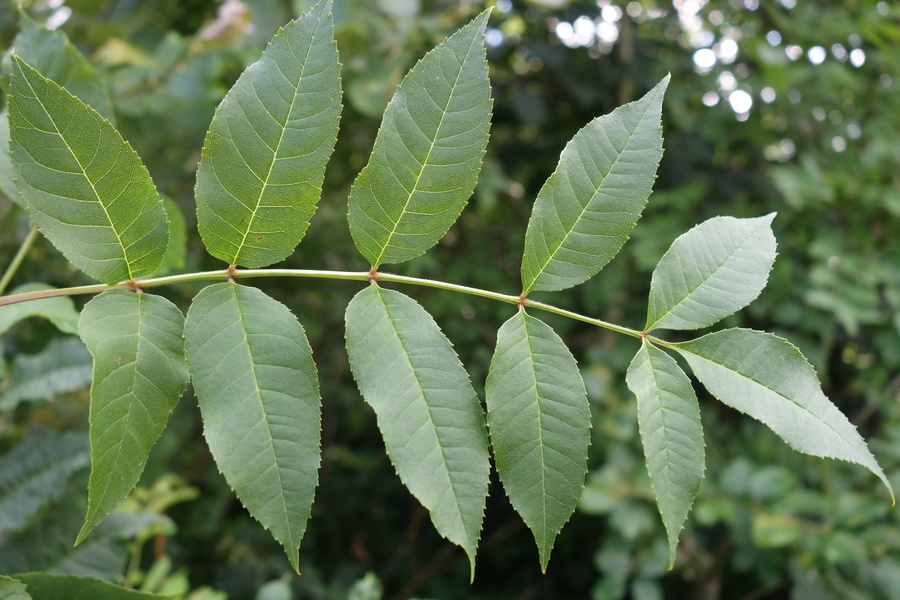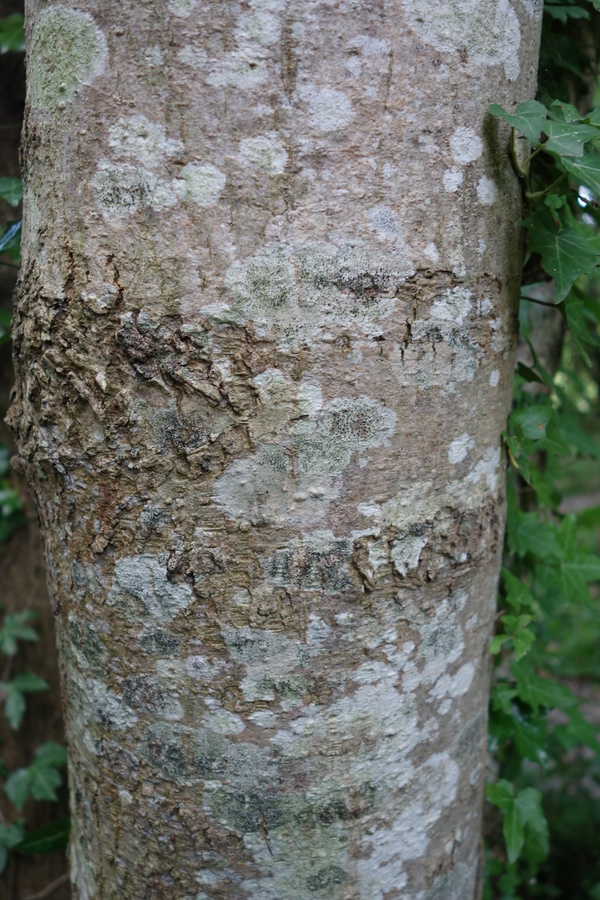ASH ( Fraxinus excelsior )- Inner and outer worlds connected
The Common Ash (Fraxinus excelsior ) is a fast-growing tree that can live for up to 400 years. It comes from a genus containing 43 species and, perhaps surprisingly, belongs to the Olive family (Oleaceae ).
Ash in the Ogham
In Celtic myth the Ash was sacred to Gwydion as a tree of enchantment, from whose twigs he made his wands. It links the three circles of existence: Abred, Gwynedd, and Ceugant - Past, Present, and Future - continual birth and rebirth.
Kindred, G. - The Tree Ogham
Ash has been long associated with healing and protection. In English foklore it was used magically to cure children with wasted limbs. The procedure began by cleaving a young ash in two and holding them fast apart. In the pre-dawn darkness, the afflicted child was then passed through the gap three times. This procedure was repeated for three sucessive mornings. The tree was then bound and left to grow. If the tree did grow strongly, then the child was expected to follow suit.
The juice of Ash was routinely prescribed as a panacea.
Ash was also employed as a premonitionary service for divining matters of the romantic. In this instance, a bundle of twigs, bound with Ash were thrust into a fire, each named with the infatuation of a girl involved in the ceremony. The order in whcih the bonds gave way were said to indicate the order in which the girls were to be married.
Practical uses
Ash is well known for its properties as a firewood: it can be burned green owing to it’s low moisture content, splits easily, produces little smoke, and has a relatively high heat output.
Ash is a creamy colored hardwood that can be steamed and worked with relative ease. It coppices naturally, producing straight poles. It has been used for the construction of handles of various kinds, owing to its toughness, yet its fine grain and reluctancy to knot make it a wonderful furniture and joinery wood.
The outer rim components (felloes) of wooden wheels need to be highly resistent to shock and so Ash was commonly employed for this purpose, along with Elm for the hub, and Oak for the spokes. All of which needed to be carefully seasoned for a number of years. Ash is used wherever else shock needs to be received: hockey sticks, oars, tool handles.
The English name Ashley derives from the Anglo-Saxon words ‘aesc’ meaning Ash and ’leah’ which was used both to describe an open space and as a word for Lye; an alkali mixture of wood ash and water with many useful properties. Originally a surname, it was likely assigned geographically to someone who lived in a place where Ash trees grew or Lye was made. Later, like many other English names, it became a first name.
Culinary uses
The following recipe for pickled Ash keys can be found in Evelyn’s Discourse of Sallets:
Ashen-keys. Gather them young, and boil them in three or four Waters to extract the Bitterness; and when they feel tender, prepare a Syrup of sharp White-Wine Vinegar, Sugar, and a little Water. Then boil them on a very quick Fire, and they will become of a green Colour, fit to be potted so soon as cold.
Ash dieback
Unfortunately Ash is at present being subject to spread of a fungal disease called Chalara or “Ash dieback” to use the colloquial term. The disease spreads by airbourne dispersal or movement of infected Ash. Some resistance has been observed, so it isn’t get known what the long-term impact will be.
References
- Woodlands, J.D Ovington
- The Wood Fire Handbook, Vincent Thurkettle
- Trees In the Wild, Gerald Wilkinson
- Acetaria: A Discourse of Sallets, John Evelyn

